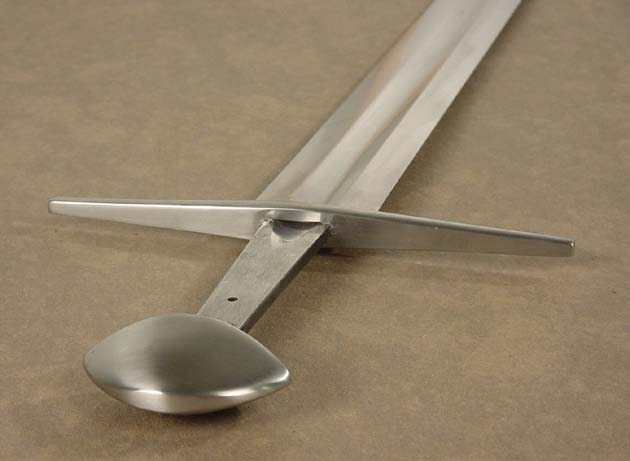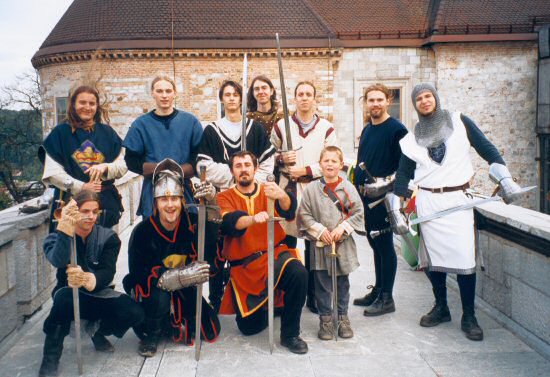I have seen claims of “wedging” the guard to the tang of blade, and I would like to know how this is done and how strong is this assembly.
I’ve handled many swords (mostly rebated stage combat Czech swords), and most of them had a problem with the cross fixing. On most swords it was pressed by the grip and the screw-on (or peened) pommel on the blade’s shoulders. In all of the cases crosses became loose in a very short time – the wooden grip contracted by the pressure. A manufacturer in Slovenia made grip of bronze (or copper) tube, filled with some sort of plastic material, but this too proved inadequate. Some Czech swords had their crosses soldered (or even welded) onto the tangs, but this also failed in time, and some of these swords also broke at the cross – I guess their heat treatment was affected by soldering.
So, how do you at Albion wedge the cross to the tang? There are no visible signs of that on photos of Gaddhjalt. How strong is this connection – would it survive the accidental blow of a sword on a cross? Or repeated shocks of stage combat edge on edge bashing?
Thank you for your answer, and I apologize for stealing your valuable time from sword making.

An assembled Next Gen Gaddhjalt - where are the signs of wedging the guard to the tang?

